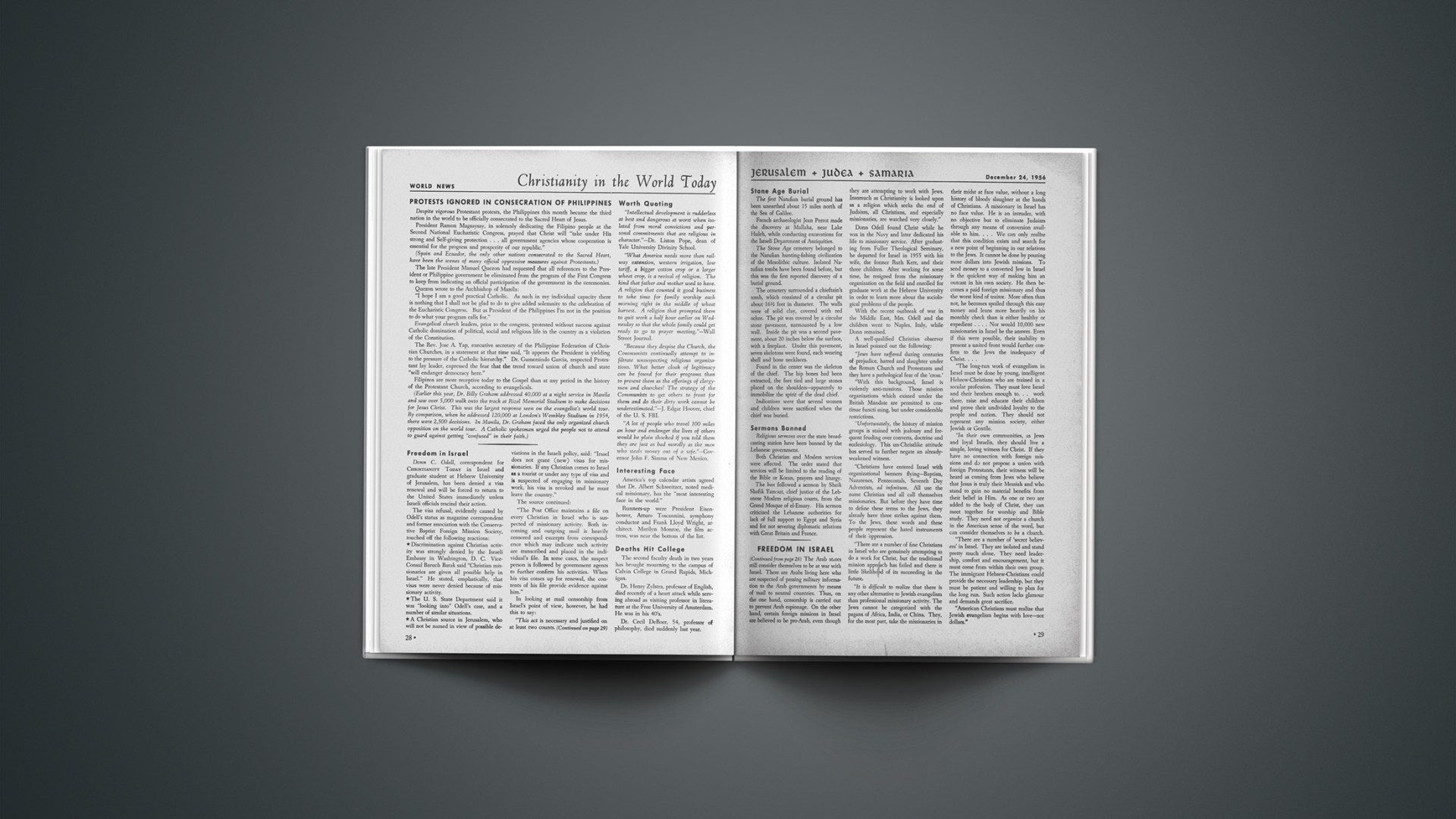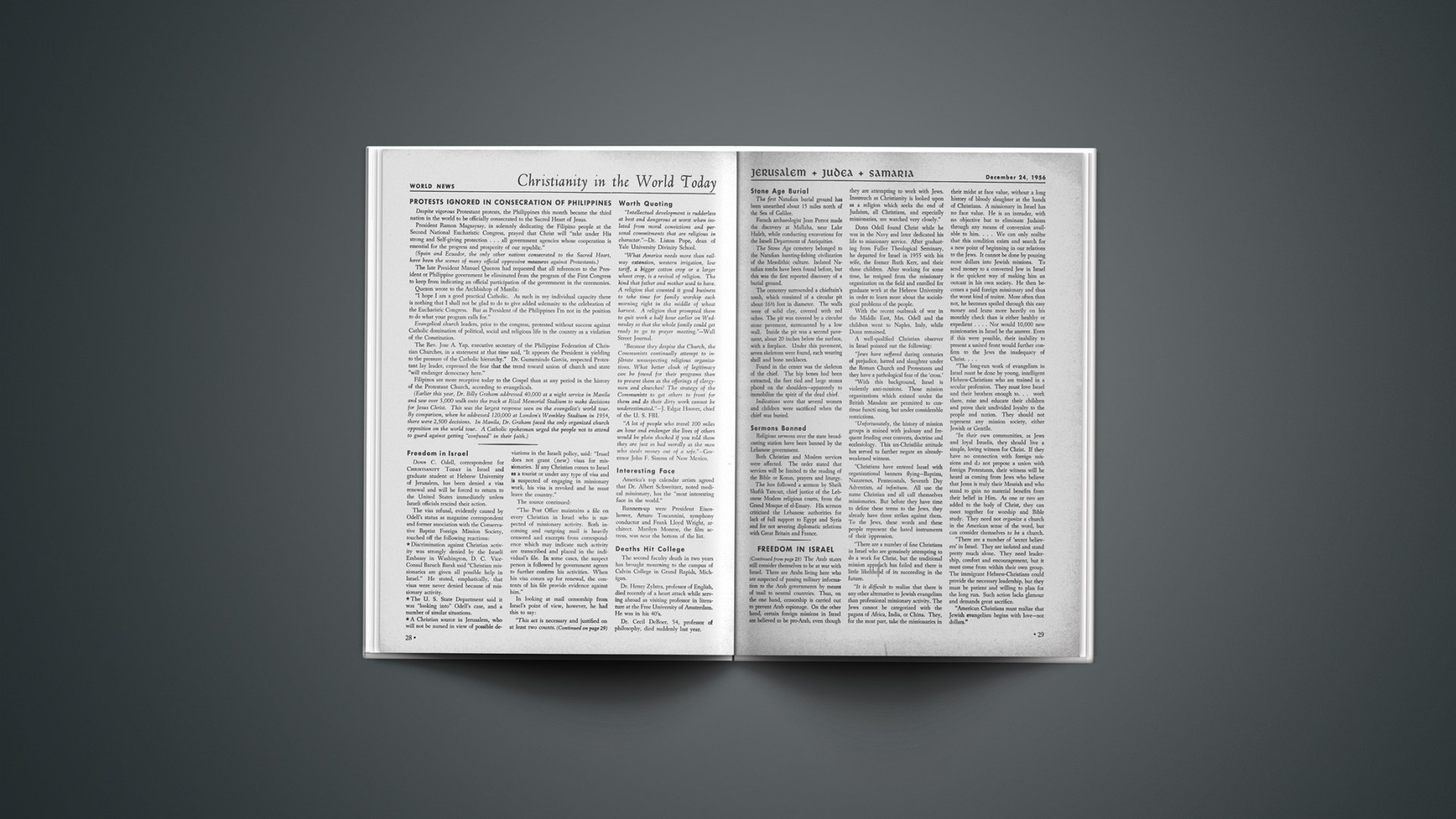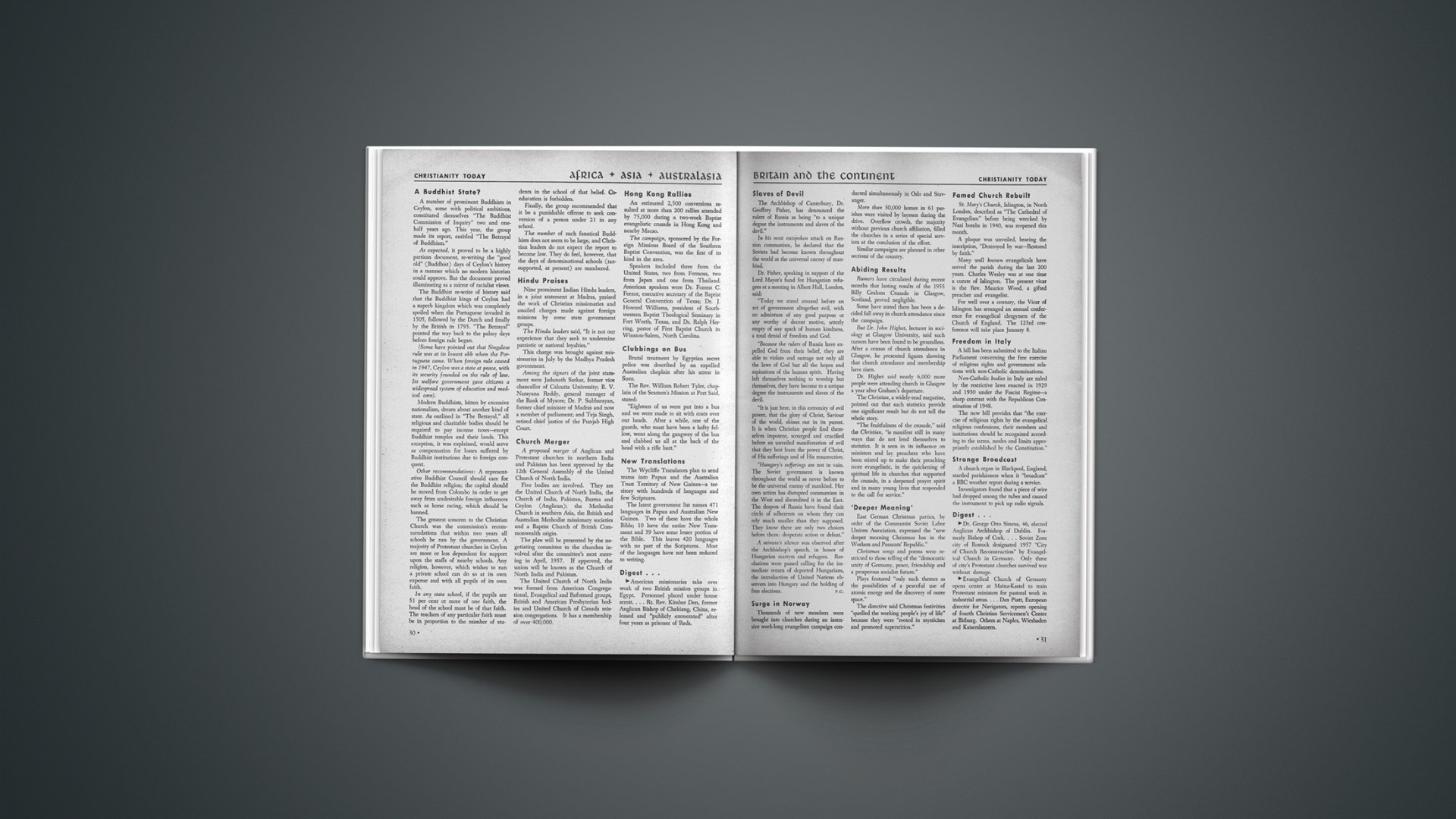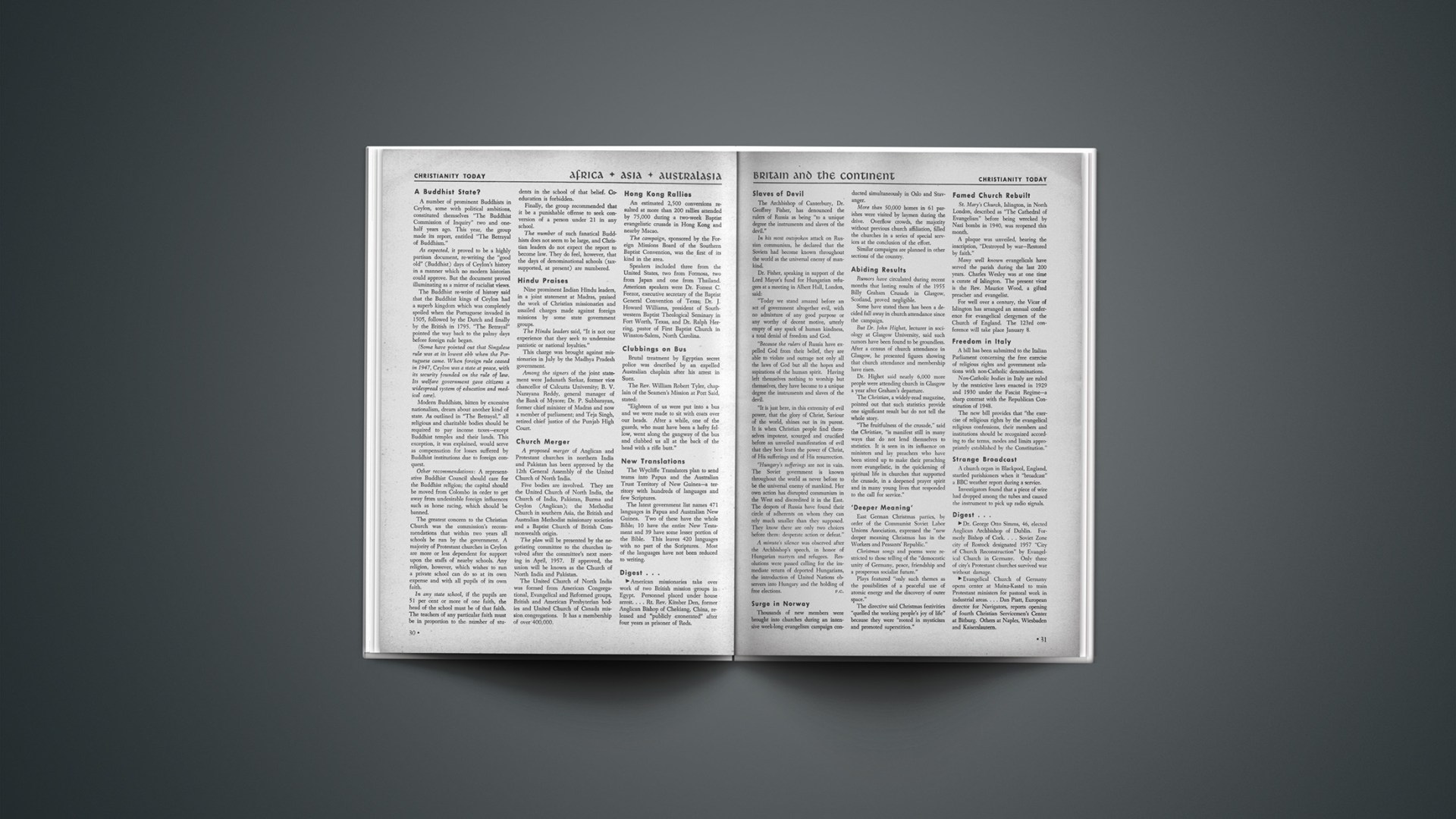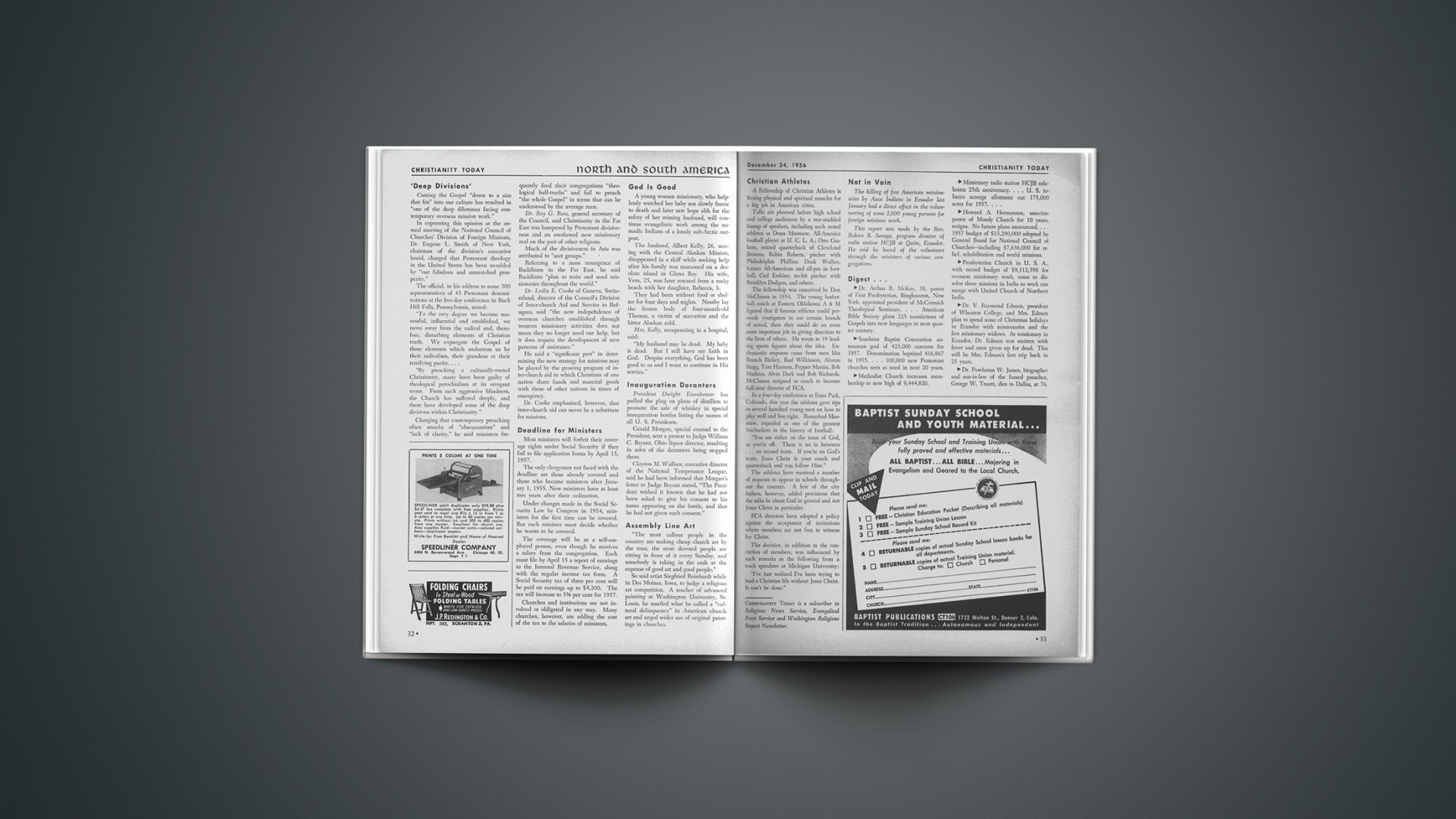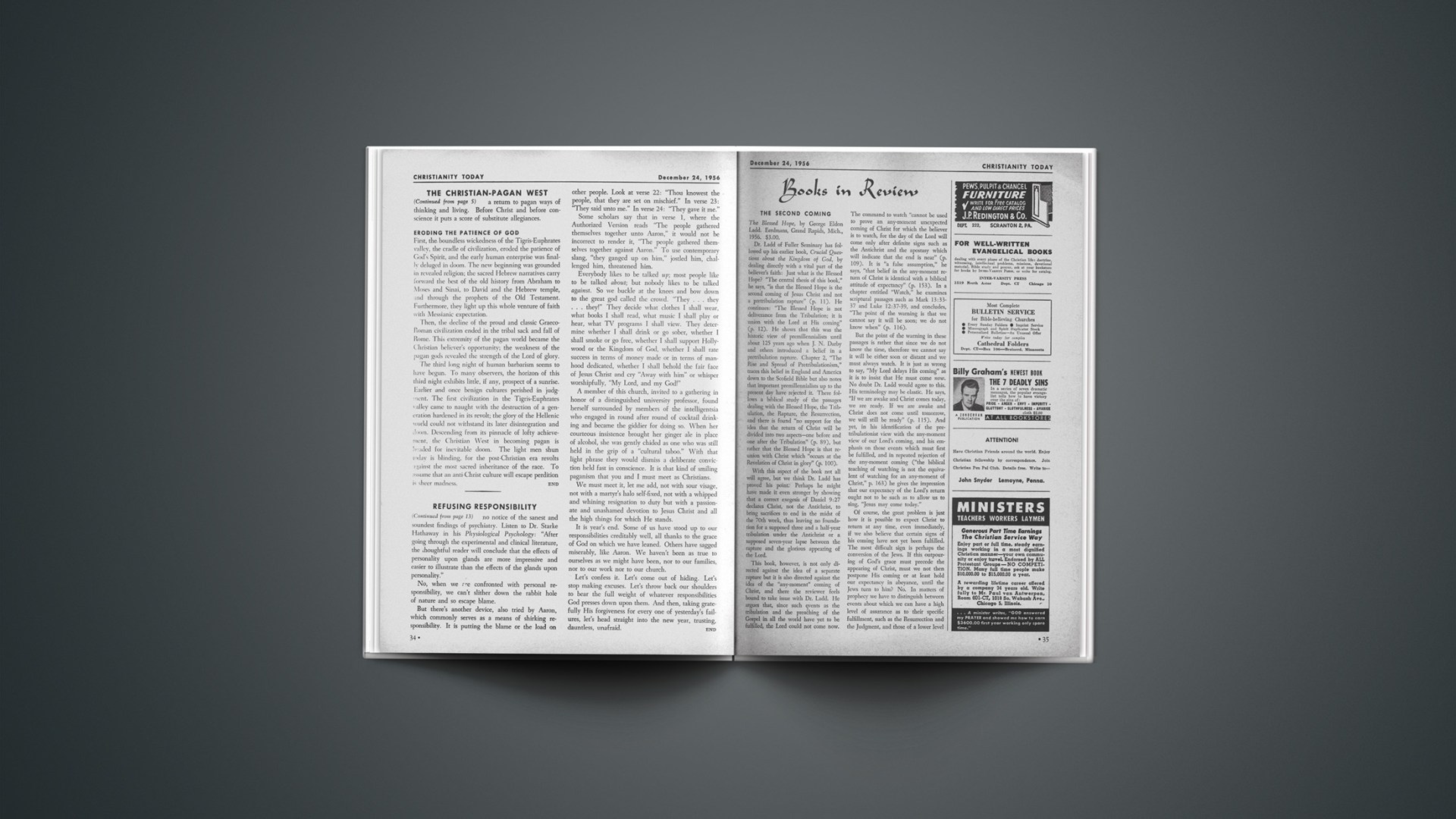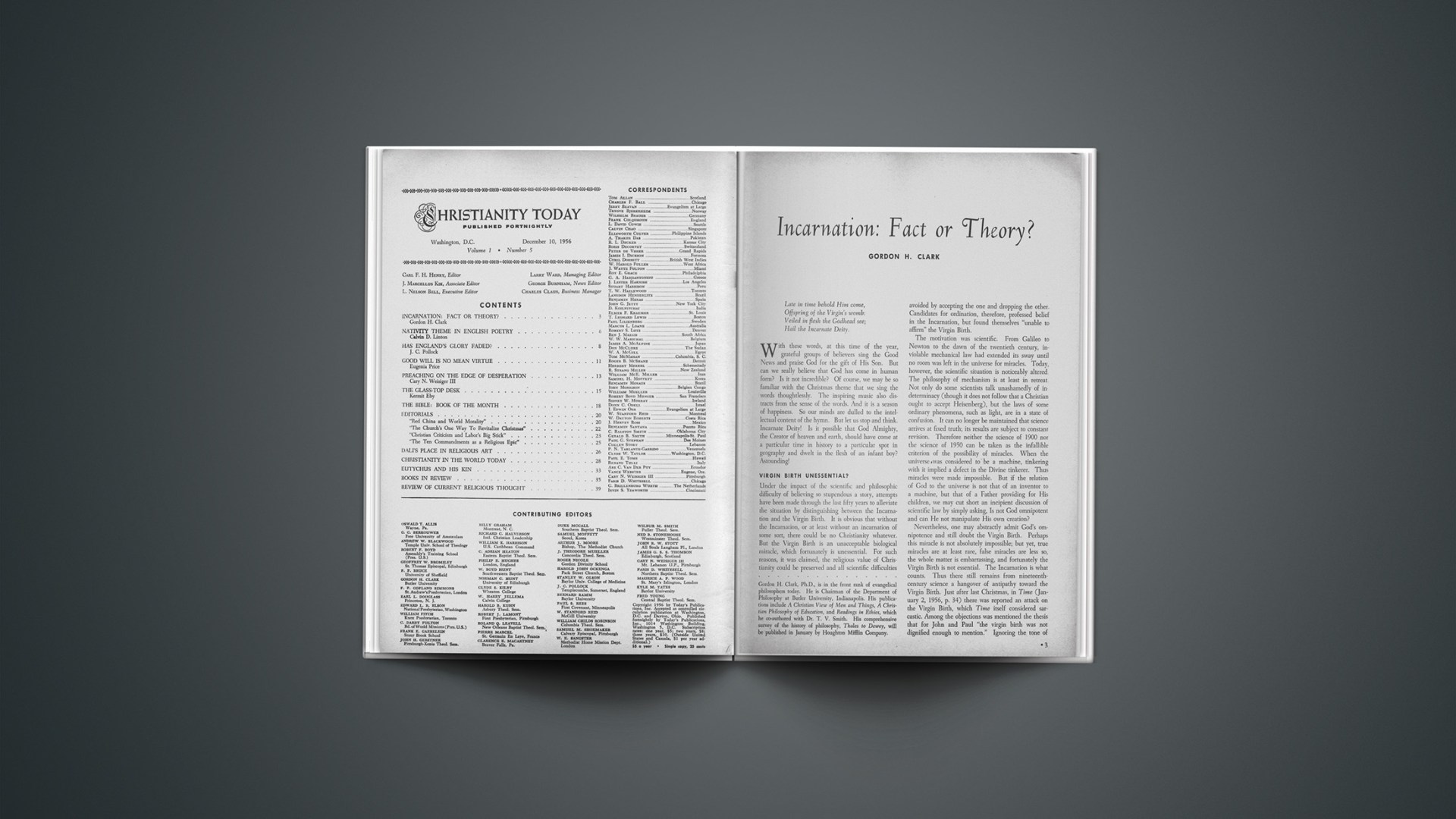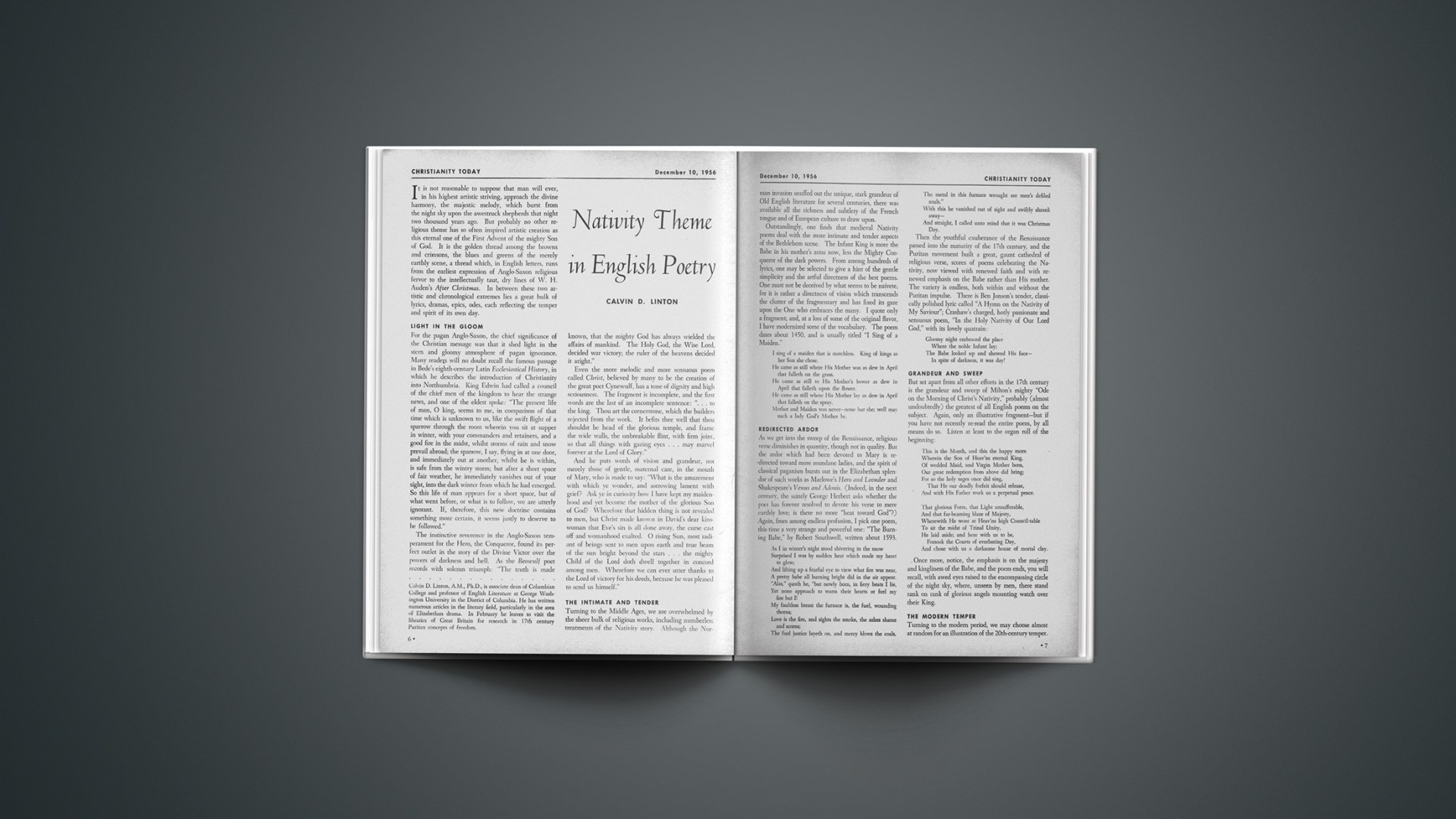THE CHILD AND THE CHILDREN
Dennis the Menace is a disconcerting American image of childhood. Our knowing guffaws at his pre-juvenile delinquency are in the same tradition that found Tom Sawyer hilarious. The novelist who pictured “momism” as the great threat to America must have had an atypical home life. The American home is not matriarchal or patriarchal; it is a filiarchy. We are not afraid of Big Brother. It is Little Brother with his six-guns who runs the ranch.
Child-centered living has at least made us more realistic about child nature. We may even be less inclined to adore the boy Jesus as a symbol of romantic, innocent childhood. Indeed, Christ Jesus was born of Mary not to symbolize childhood but to save it. Our hope is not in the children but in the Child.
Yet at the manger we learn not to despise the little ones. From Bethlehem, from the memory of Jesus blessing the children in his arms, flows Christian tenderness toward boys and girls. Martin Luther shows it. Beside the virile drum beat of “A Mighty Fortress” is the childlike simplicity of the “From Heaven on High” which Luther surely sang with his children and may have written for them:
Ah, dearest Jesus, holy Child,
Make thee a bed, soft, undefiled,
Within my heart, that it may be
A quiet chamber kept for thee.
Kierkegaard has “Climacus” say that Christianity is not for children. The reverse is true. It is for children and the childlike only. Jesus laid his hands on the children and said, “Of such is the kingdom of heaven.” He is saying that to us of our children. In the Christ-centered home the child in the midst is not idolized but respected and loved, admonished and nurtured—in the Lord.
EUTYCHUS
PERILS OF ECUMENICITY
Sincere thanks … for the two editorials … the perils of Independency and Ecumenicity. Since I am devoted passionately to the ecumenical movement, I specially appreciated your penetrating words toward it. Here you have expressed certain things about which I had been vaguely troubled, but which I had never put into words, so to speak. The matters of doctrinal vagueness and the form of unity, for example, and especially the former. For me, you have done a great service.…
GEORGE W. BARGER
First Christian Church
Maryville, Mo.
Since when does orthodoxy, Church membership, or anything else require that we believe in the Virgin Birth, the Bodily Resurrection, the, of all things … “substitutionary atonement of Jesus Christ”?… Many ecumenicists have no quarrel with at least some of these ideas, and most of them will agree that others are free to believe them. Personally, I have no truck with any of them.… Our Presbyterian Church does not require belief in the three things you mentioned. If it did, a lot of us would be out on our ear.…
THOMAS J. KELSO
Westminster Presbyterian Church
Pittsburgh, Pa.
As a member of the Church of England which is the Catholic Church of this land, I have no desire to see foreign Protestant literature.
L. A. PEARSON
The Vicarage
Hornsey, N.8, England
It is the first world wide publication of its kind I have come across and should help our churches toward that oneness in Christ for which we all long.
FRANK MILIKEN
St. John the Baptist Vicarage
Meopham, Kent, England
DISCORD OVER KING JAMES
… It is shocking to read that changes in the interest of fidelity to the original language, etc., should be deferred.… This approach is far less in the prophetic spirit and tradition than it is in the spirit of spineless accommodation.…
LAURENCE T. BEERS
First Baptist
Pottstown, Pa.
… He speaks so highly of Paul’s “hymn to love” … but apparently hasn’t read K.J.V. recently. “Love” isn’t even mentioned. The word’s still “charity,” Brother Jewett!
HENRY ERVIN
Philadelphia, Pa.
I have the prejudice that Christianity was intended for all people and should be so presented; the thousands of instances where words like “Let love be without dissimulation” are changed to “Let love be genuine” should show which version is best adapted to the “preaching to all people” idea of Christianity.
ROBERT S. LEDERMAN
Otterbein College
Westerville, O.
… Enough grinding for your ax to become visible: to damn the R.S.V. and church union.… Stop sending your bait right now. I won’t bite: it’s too rotten.
GEORGE HIPKINS
Port Deposit Presby. Ch.
Port Deposit, Md.
After reading with agreement the article on the King James Version, I wonder if your readers would appreciate the appraisal of Dr. Frederick William Faber “who had exchanged its beauties for the crudities of the Romish Version.” Of “the uncommon beauty and marvellous English of the Protestant Bible” he remarked further: “It lives on the ear like a music that can never be forgotten, like the sound of church bells, which the convert hardly knows how he can forego. Its felicities often seem to be almost things rather than mere words. It is part of the national mind, and the anchor of national seriousness. The memory of the dead passes into it. The potent traditions of childhood are stereotyped in its verses. The power of all the griefs and trials of a man is hidden beneath its words.… In the length and breadth of the land there is not a Protestant, with one spark of religiousness about him, whose spiritual biography is not in his Saxon Bible.”
ARTHUR PETRIE
Seattle, Wash.
A vast group of devoted Christians … have neither burned nor scourged the R.S.V., but have with common sense and appreciation, received it for its ability to get the Word of God “across” to the millions … who are absolutely confounded by the “beautiful literature” of the antiquated K.J.V.… Pagan Americans will never sit in an ivory scholastic tower to appreciate the archaic beauty of former golden ages.
N.E.J.
Lafayette, Ind.
Correct the 13 errors and drop the 13 “eths” in the K.J.V. of 1 Corinthians 13, and it will be music.
DALE MOODY
Southern Baptist Theological Seminary Louisville, Kv.
… The lowest form of “defense” of the King James version.… I cringed at the premises which Dr. Paul K. Jewett builds in his “Majestic Music of the King James.” … This type of defense will do more to confuse than anything that a group of “ecumenical experts, working jointly in America and England” can or ever will be guilty of doing.
P. LYNN MILLER
First Baptist Church
Paw Paw, Ill.
We were greatly fascinated.… About the best tribute ever paid the King James Version.… Would it be possible to reprint it …?
ERNEST GINGERICH
Huntington, Ind.
NO ULTRA-FUNDAMENTALISM
… I am glad to see this magazine appear. The list of contributors indicates that it will be Biblical and evangelical without being ultra-fundamentalist …
J. GEORGE W. SWOPE
East Orange, N.J.
A good standard of religious journalism.…
ADIELMONCRIEF, JR.
First Baptist
St. Joseph, Mo.
As a Christian teacher in an elementary school, I was deeply impressed.…
DAVE MACPHERSON
Long Beach, Cal.
I feel moved to say “thank you”.… Many liberals like myself who felt in Seminary they were saved by Karl Barth have made the long journey upward to an acceptance of the Bible as the complete word of God.… Beyond Barthianism is the Bible.…
MAURICE O. MAHLER
The First Church
Sterling, Mass.
All that you propose for your magazine is now available in many other journals of excellent quality. I see no need for another.… There are urgent needs in the world today for which your time, energy, and money might better be used.
P. A. COLLYER
White Plains, N. Y.
American churchmen need a good middle-of-the-road journal. CHRISTIANITY TODAY simply does not qualify.
C. HARDING VEIGEL
Boaz-Sylvan E.U.B. Churches
Boaz, Wis.
EVANGELISM IN ENGLAND
Thank you very much for sending me the second issue of “CHRISTIANITY TODAY.” I am grateful for it.
While there is much in it of great interest and with important bearing upon the world today, there is one reference to England which I feel I must criticize.
On page 31 (Oct. 29, “Britain and the Continent”) you say: “The change in the climate of British church life has been dated by most observers from the Billy Graham Greater London Crusade of 1954.
“A new evangelistic spirit has been seen in all the churches. The Church of England recently set up a Commission on Evangelism, with the official backing of the Church Assembly.”
I have before me a copy of a Report called “Towards the Conversion of England.” It was published in 1945 by the Press and Publications Board of the Church Assembly, 2 Gt. Peter Street, Westminster, S.W.I. The sub-title to this is “Being the Report of a Commission on Evangelism appointed by the Archbishops of Canterbury and York pursuant to a resolution of the Church Assembly passed at the Summer Session, 1943.”
The terms of reference for this Commission are given on Page 6 of the Report. They are as follows: “That the Assembly, recognizing the urgent necessity for definite action, requests the Archbishops to appoint a Commission under Standing Order XVII to survey the whole problem of modern evangelism with special reference to the spiritual needs and prevailing intellectual outlook of the non-worshipping members of the community, and to report on the organization and methods by which such needs can most effectively be met.” (June 23, 1943.)
It was, I think, remarkable that this project was planned and launched in one of the grimmest periods of the War. It meant that when the War came to an end, the Church of England had at hand a splendid report on Evangelism, which was much discussed at the time, and had a profound influence upon the work of clergymen and laymen in the years that followed. At the same time it must be said that this Commission and its Report were no more than focal points of a very widespread concern for evangelism in the Church in this country. And even in those days the concern was being translated into action.
While I do not wish to under-estimate the effect of the Billy Graham Greater London Crusade of 1954, I hardly think your observers—whoever they may be—have estimated accurately its importance if they suppose that the change in the climate of British Church life it to be dated from it. I am quite sure it cannot. The change began much earlier, and from very different roots.
I hope it may be possible for you, of your goodness, to correct the impression given, that the Billy Graham crusade led to the Church of England setting up a Commission on Evangelism. For this is simply not true. We owe Billy Graham a debt—though it is only honest to say that the nature of the debt has been much debated amongst us—but the facts prove that we do not owe him the particular debt you suggest.
JOHN TOWNROE
King’s College
London, Eng.



